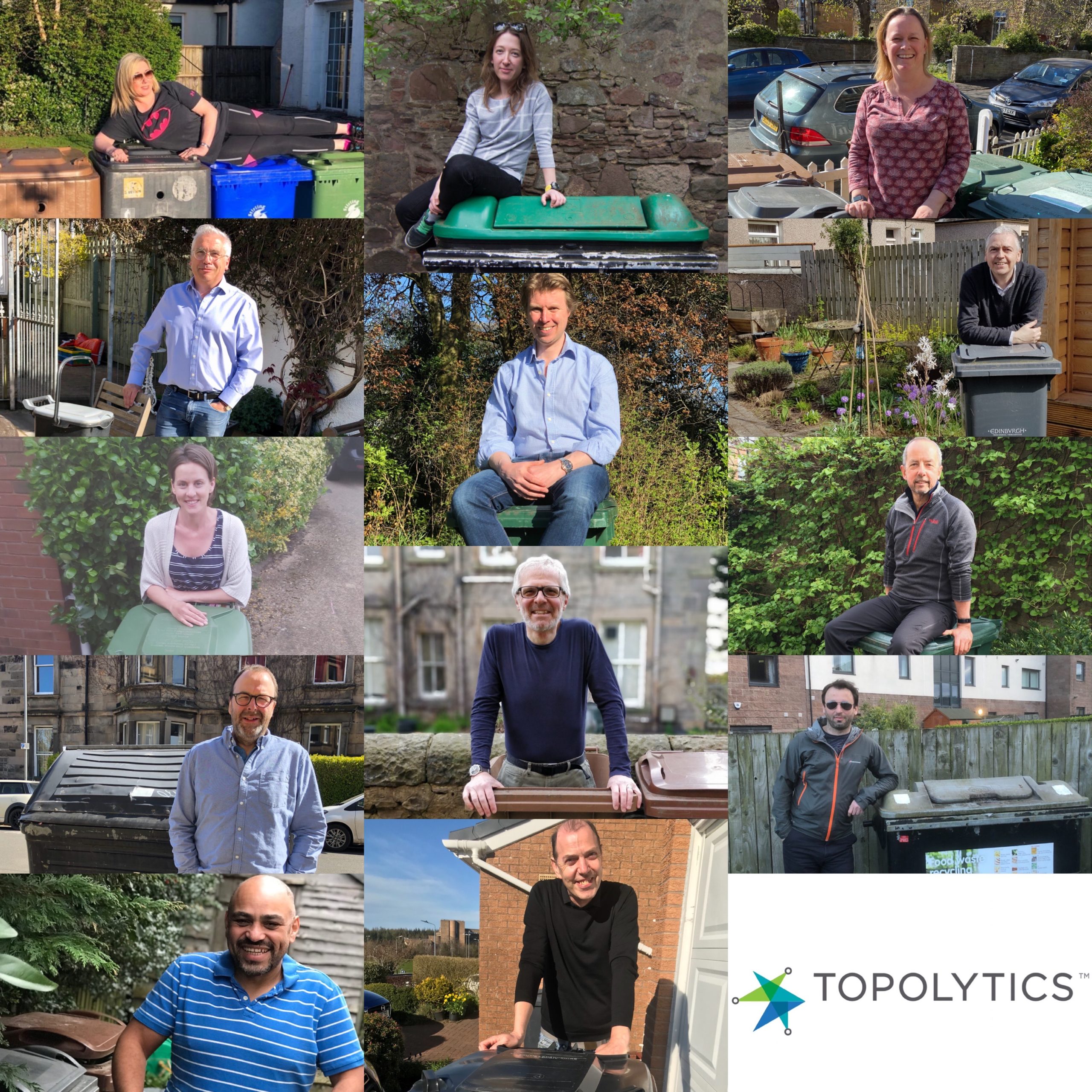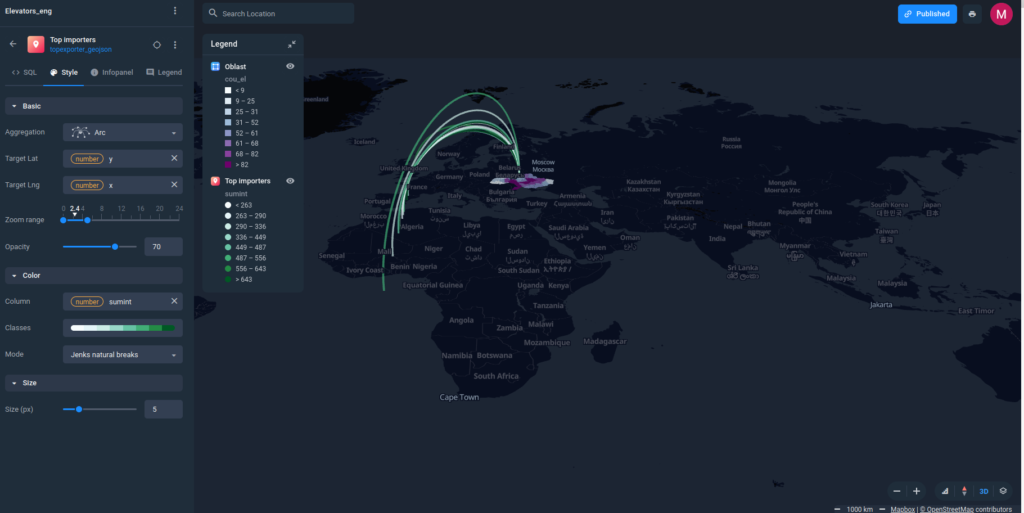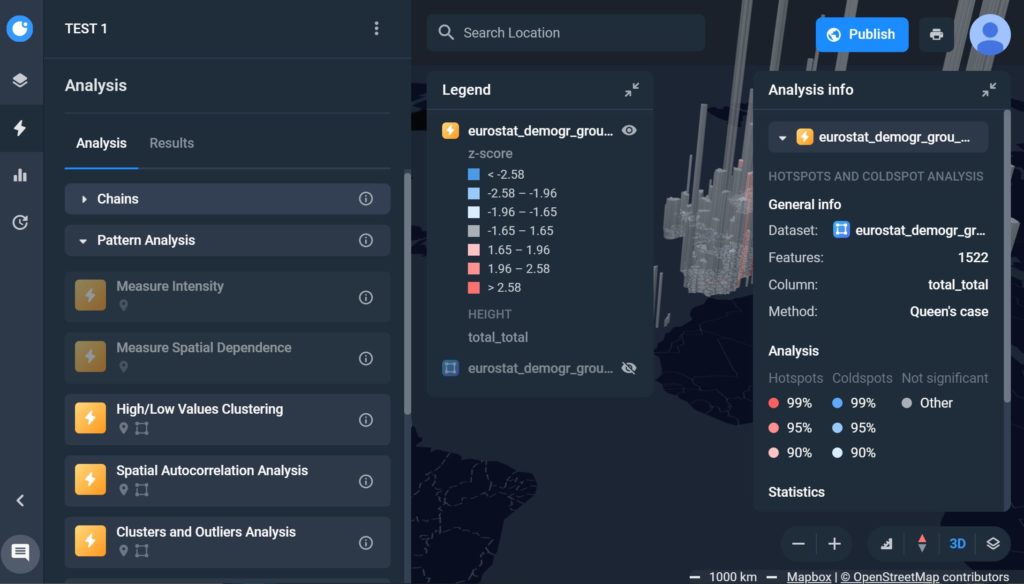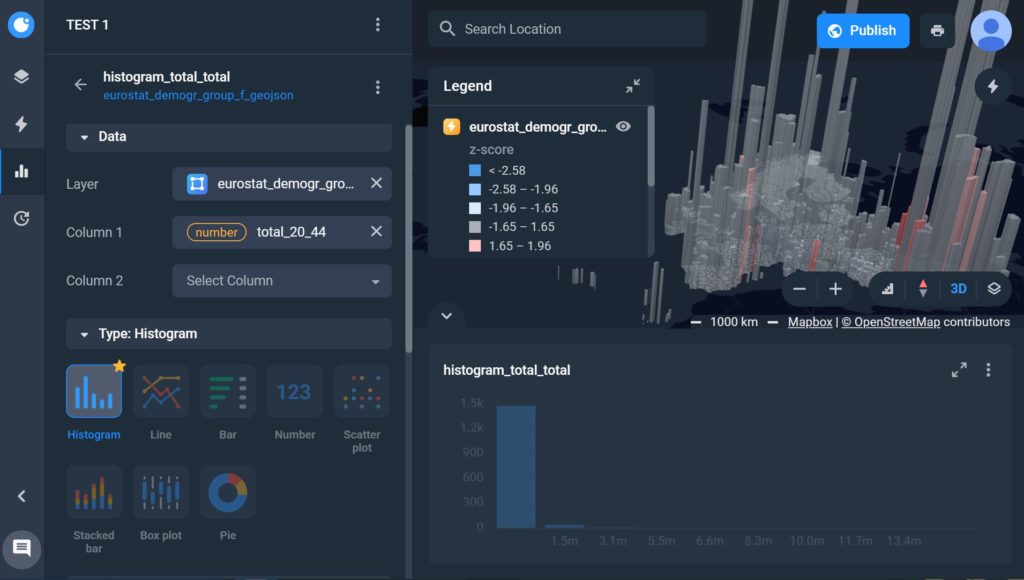In 2016, we generated more than 2.01 billion tonnes of waste. That’s roughly 270 kilograms of waste per person for all the 7+ billion people and thanks to rapid urbanization and growing population, the global annual waste generation could increase to 3.4 billion tonnes by 2050 (Reference: WorldBank report). That’s a lot of waste! According to the 2016 WorldBank report, more than one-third of waste in high-income countries is recovered through recycling and composting, only 4 percent of waste in low-income countries is recycled. Given that high-income countries generated 34 percent of the 2.01 billion tonnes that is still millions of tonnes of waste not being recycled; probably ending up in a dumping yard in a low-income country.
How do we tackle this problem? How can we recycle more of the waste we generated? How do we avoid global waste adding to the climate change? I sat down to talk with the brilliant and inspiring Michael Groves, the founder of Topolytics, a startup from Edinburg that aims to be a digital enabler for the circular economy by making the world’s waste visible, verifiable and valuable.
Q1: Hi Mike, thanks for taking the time to do this interview. Before we start talking about Topolytics, I’d love to understand your personal motivation for getting into waste management and the circular economy. What motivated you to start a company instead of say, founding a NGO?
I’m a geographer – which back in the day was the academic home for environmental management. That has changed now of course – although geography remains for me the best discipline for those with curiosity about the interaction between the human and the ‘natural’ world. After completing a PhD in satellite remote sensing, I recall someone asking me what job I wanted. I said that I would like to work in ‘environmental management’. Their response: ‘I suggest that you get yourself a proper job!’ That was the prevailing attitude 25 years ago – and to a certain extent still holds – although within the last few years that has changed too, A few years ago, I saw a poster advert for one of the big jobs recruiters and it had ‘environmental consultant’ in the search field – so I guess we have moved on.
In terms of waste management. I guess I could go back to my time in the late 90’s in South-East Asia, where I undertook some of the early audits of sustainable forest management across the region, under the Forest Stewardship Council (FSC) scheme. I spent many weeks travelling to and from and living in logging camps from Borneo to Papua New Guinea and Vietnam. On days off, there was always a remote beach to go to, but too often I would see a tideline of flip-flops and plastic – which got me thinking – how on earth did all that get here? More recently, I had set up then sold a consultancy that wrote annual sustainability reports for multinational, listed companies. Topolytics came out of this – how to marry up the worlds of data, analytics and sensors to environmental reporting. We chose to manage, analyse and visualise the data geospatially and one of the most interesting aspects was understanding and showing what happened to waste from factories, shops, offices etc. At the same time, waste became a ‘thing’ – with the help of David Attenborough and many others and their call to action on ocean plastic. Hence, we found ourselves as one of the more interesting players in the world of ‘waste tech’.

The reason that Topolytics is a company, not an NGO, is that I have always been in the private sector, I believe in the power of entrepreneurship to change the world for the better and meet some of the big challenges we face. I am also determined to build a scaled for-profit enterprise with purpose.
Q2: For those of you who don’t know Topolytics, could you shortly describe what you do and your mission? Walk us through your ‘WasteMap’ product.
Our mission is to make the world’s waste visible, verifiable and valuable. This is because, globally, more than 60% of the world’s waste still ends up in landfills, waste dumps or leaks into the environment. The system that ‘manages’ this material is complex and opaque – it is also a big, valuable industry. It involves waste producers, waste carriers, processors, recyclers, landfill operators, energy from waste plants, brokers, exporters, investors, local governments, regulators and policy makers. In all countries, waste management is regulated – but this environment varies in sophistication and effectiveness. The commercial players may be multinational, national, local, formal or informal ‘waste pickers’, for example. Making sense of this system and making it more visible globally, is what we do. By doing this, we can build trust in the data and generate insights that can drive better environmental, social and commercial outcomes. WasteMap is our core data platform – into which we ingest data from many sources, in many formats – then clean and normalise the data, in order to generate the insights,
Q3: It’s heartening to see that a commercial company can be successful even if they work in a traditional non-profit/activist sector! On a fundamental level, Toploytics works with companies in the entire waste chain. How do companies that manufacture the waste save money due to a better waste supply-chain management?
Waste management is anything but a non-profit activist sector, Globally it is a highly valuable ‘industry’ and has been since its beginnings. Humankind has always created waste. Clearly the growth in the volumes of waste and its leakage into the environment, has created environmental and social problems that we can all understand. Fundamentally though, for companies and organisations that create waste, they are spending lots of money having this material removed from their sites, but have traditionally not understood what happened to it downstream. This is not changing and we are helping these organisations to understand this ‘downstream materials’ chain, what happens to this material and offering insights into how they might improve the recovery of this material – becoming more resource and cost efficient.
Q4: What is your value-proposition for recycling companies and waste management organizations. Do they have reservations giving away their data?
There is a value chain for waste – from the waste producer, through the carriers, processors and recyclers. We work with them through their customers, we also work directly with recyclers and waste brokers that recognise the potential of analytics, machine learning, sensors etc to improve their own efficiency, improve the quality of processed material and add value to their customer relationships. Industry 4.0 is as transformational within the waste and materials sector as it is in many other industries.
Q5: How big is the recycling/waste management industry today? How far are we from at least recycling 50% of the waste we generated until today?
According to the World Bank, the levels of ‘urban’ waste globally will increase from just over 2bn tonnes to over 3bn tonnes in the next twenty years or so. The industry that moves and manages this material is worth many hundreds of billions of Euros. It’s a big industry! The levels of recovery and recycling vary by geography and material types. For example, aluminium and paper are recovered and recycled to a significant degree – although it is by no means 100%. Other materials such as plastic are more problematic – due to the cost of processing, problems with contamination and the low cost of virgin raw material. Electronic waste and other complex products and materials are recovered and recycled – but big challenges remain. How much should we recycle and how much should we maintain or remanufacture – rather than throw away and move onto the next shiny up to date device?
Q6: Considering that waste doesn’t always leave a digital footprint. Where do you even start? Where do you get the data to provide insights to your customers?
Our fundamental view is that there is no single source of the truth on waste. That is why we aggregate and analyse data from many different sources and many different formats and organisations. We make it easy for companies in the downstream materials chain to share their data with us, so that we can answer their questions.
Q7: You have a PhD in aerial and satellite Earth observation and more than 20 years of experience in the geospatial industry, what role does location intelligence play at Topolytics?
Everything happens somewhere! Waste is a physical material that is created in one location then moved to many other locations before it is finally processed or disposed. If we are tracking this through the downstream materials chain, we have to be quite clear in our view that if waste has gone from A to B – we can accurately define where A and B are. The movement of this material also generates its own costs and environmental impact. Location is therefore crucial to understanding then improving the outcomes for waste material – that is why we call our analytics platform WasteMap.
Q8: In your experience, have you noticed if the size of the company makes any difference on whether they are interested in waste management in the first place? Is this (still) the domain of the biggest multinationals in the world?
Waste is a cost to all companies and organisations. Smaller organisations may generate lower volumes of waste, but this material may be highly valuable and difficult to recycle. The larger, multinational companies, generally have more costs and material in play, but we also work with smaller companies that may have a national or local footprint.
Q9: In one of your company videos, you mentioned that you want Topolytics to be a “Digital enabler for the circular economy’, where do you see Topolytics 3 years from now? What are the biggest challenges in making this vision a reality?
We enable resource efficiency, which in turn can enable a more sophisticated approach to product development, packaging and supply chains. If resource efficiency and the circular economy are going to be global and significant, we will need the digital infrastructure and insights at scale to make this happen – that is what Topolytics does.
Q10: You are based out of Edinburgh, how’s the startup scene? Are there many investors specifically looking at geospatial companies? Are there any local meetups/events that cater to the geo community?
The start up scene in Edinburgh and indeed, Scotland, is thriving and despite Covid, continues to grow. There are great universities, a supportive policy environment and some brilliant companies and entrepreneurs. Scotland, of course, has a long tradition of technological entrepreneurship. There is also a long tradition of ‘mapping’ – see the survey of Scotland, a pre-cursor to the Ordnance Survey and great cartographers and publishers such as Bartholomew, creator of the Times Atlas of the World (originally made in Edinburgh and now made in Glasgow). The Ordnance Survey and Registers of Scotland run an arm of the Geovation programme in Scotland that incubates companies with a location focus. The Association for Geographic Information Scotland also has an active membership and programme of events.
Q11: Okay, this is a tricky one – on a scale of 1 to 10 (10 being the highest), how geoawesome do you feel today?
10 – geography is going to save the world!
Q12: Any closing remarks for anyone looking to start their own geo startup?
Think big and just do it! Don’t fear failure. Persevere. Enjoy.
About The Next Geo
The Next Geo is all about discovering the people and companies that are changing the geospatial industry – unearthing their stories, discovering their products, understanding their business models and celebrating their success! You can read more about the series and the vision behind it here.
We know it takes a village, and so we are thrilled to have your feedback, suggestions, and any leads you think should be featured on The Next Geo! Share with us, and we’ll share it with the world! You can reach us at muthu@geoawesomeenss.com or via social media 














